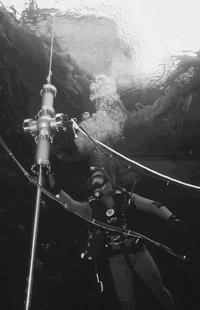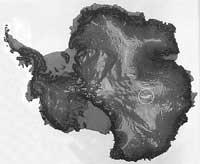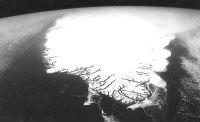Ibon Vostok of Antarctica
2000/04/01 Elhuyar Zientzia Iturria: Elhuyar aldizkaria
Lake Vosto was discovered in 1994: Gigantic freshwater lake under the eastern ice mantle of Antarctica. It is 280 km long and in some areas a depth exceeding 500 m. It is the largest of the 70 lakes in the region and has a great interest for researchers, as it can be home to ancient microorganisms.
Since the ice sheet was formed on the lake, or in other words, in the last 10 million years there has been no direct interaction between the lake and the ocean and the atmosphere. And life needs these interactions in order to develop them.
If the lake is not a pre-glacial heritage, its origin has been the melting of the upper ice sheet. Studies in Vostok indicate that ice melts as the top layer of ice moves: ice melts at the left end of the lake, falls into the lake, and later freezes again. This phenomenon allows the exchange between ice and lake and allows microorganisms to live, since water traffic is accompanied by food circulation.
Despite the difficulties in calculating the age of all the lake's water layers, the currently melting ice is 500,000 years old. This means that the lake's youngest water layer is at least 500,000 years old, which is a lot for a group of microorganisms to remain isolated from the environment. However, last year Vosto found bacteria in the ice extracted from the lake.
Researchers have also looked to the lake's soil for an energy source, as the site has tectonic activity and a life similar to that of seabed volcanoes may have developed in the lake.
The researchers have great interest in the study of Lake Vostok, since the physical conditions that occur in this area are similar to those of the satellite Europe of the planet Jupiter, a moon covered by a gigantic layer of ice. Vostok research allows scientists to know Europe.

Gai honi buruzko eduki gehiago
Elhuyarrek garatutako teknologia





